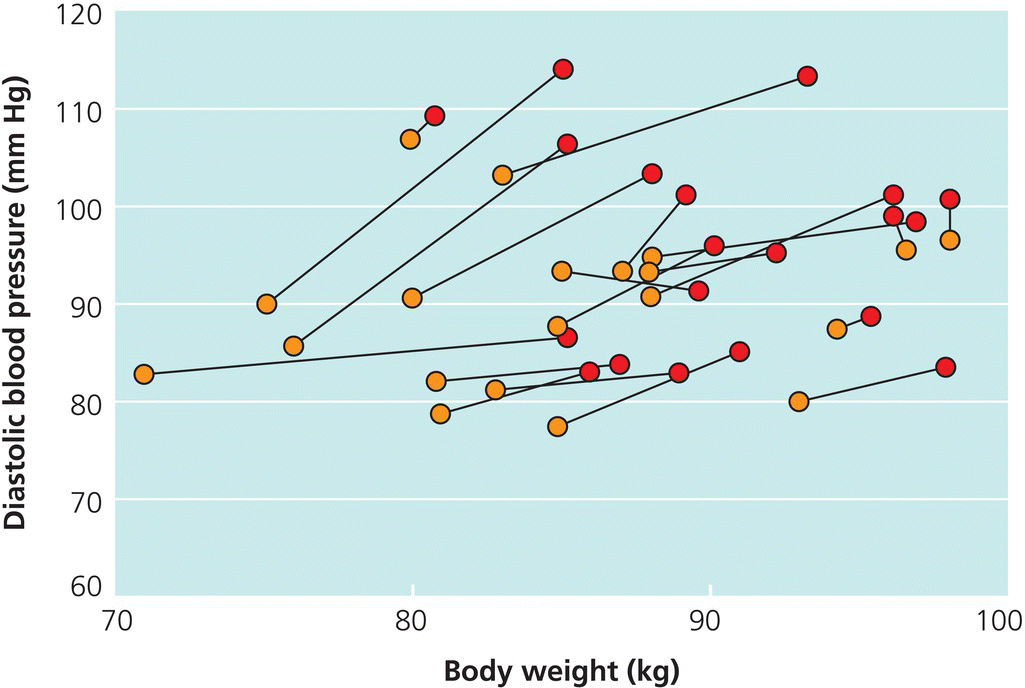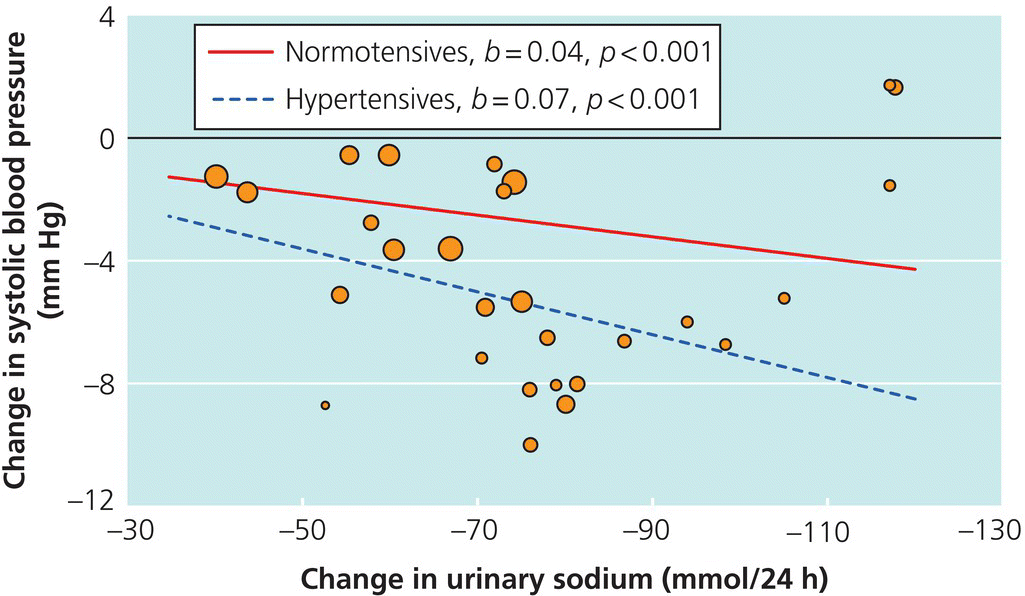Chapter 8 Many lifestyle factors increase blood pressure, and their modification can reduce blood pressure in patients with or without hypertension. Changes that lead to such reductions include restriction of salt intake, weight reduction, reduced intake of dairy products, increased intake of fruit and vegetables, moderation of alcohol intake and increased exercise. These approaches may reduce the need for drug treatment, add to or complement the effect of antihypertensive drugs and even occasionally allow antihypertensive drugs to be stopped. Effective non-pharmacological lifestyle modification may reduce blood pressure as much as a single antihypertensive drug. Combinations of two or more lifestyle modifications produce even better results. In patients with mild hypertension but no cardiovascular complications or target organ damage, the response to non-pharmacological measures should be observed for 4–6 months. If antihypertensive drugs are introduced – for example, in patients with more severe hypertension – non-pharmacological lifestyle measures should be started concurrently. Most management guidelines recommend that verbal and written advice on lifestyle measures be given to all patients with hypertension as well as those with high-normal blood pressure or a strong family history of hypertension. These non-pharmacological approaches should also be applied in a population-based strategy to manage blood pressure in the community. Such a strategy could theoretically minimise the increase in blood pressure with age and thus reduce the prevalence of hypertension, as well as the burden of cardiovascular disease to the community. Obesity and hypertension are closely related; the mechanisms of this relationship are complex. Firstly, there is a tendency to over-read blood pressure with an upper arm cuff. This source of error can be reduced by using larger blood pressure cuffs when the arm circumference exceeds 35 mm. Other true mechanisms include a higher salt intake associate with obesity, insulin resistance, increased sympathetic tone and sodium and water retention. Obesity is also closely related to obstructive sleep apnoea (OSA), which also causes a rise in blood pressure. There is increasing anxiety about the rising prevalence of overweight (BMI 25–30) and obesity (BMI ≥ 30) in the general population. In some populations in the developed countries, obesity is seen in 30% of adults. Clearly, therefore, obesity must be seen as a public health issue, which needs to be solved by public heath means, if necessary with legislation. At I clinical level, weight reduction does cause a significant fall in both systolic and diastolic blood pressure. Most of these controlled trials have been relatively short term and have required a lot of effort by the research trialists (Figure 8.1). Sadly some of the reductions in weight achieved in the short term have not been maintained on a longer term basis. Taking into account all studies, a simple rule of thumb for patients is that if they can reduce their weight by 1 kg (roughly 2 lb) the diastolic pressure will fall by about 1 mm Hg; a 5 kg (roughly 10 lb) reduction will reduce diastolic pressure by 5 mm Hg and so on. Figure 8.1 Overview of short term trials of weight reduction on blood pressure. Source: Reproduced with permission from Staessen, J., et al. (1988) Journal of Human Hypertension, 2, 207–217. © Nature. There is evidence that dietary advice and support provided by nutritionalists and dietitians is more effective than advice by a doctor in a routine clinical setting. Technical advice, information of healthy versus unhealthy foods and their availability, together with information leaflets and Internet access to Blood Pressure UK may also prove beneficial. Weight reduction also has beneficial effects on other risk factors associated with hypertension, including insulin resistance, type 2 diabetes mellitus, dyslipidaemia and left ventricular hypertrophy. The blood pressure-reducing effect of weight reduction should be complemented by an increase in physical exercise and a reduction in the intake of salt and alcohol. Many studies confirm a clear and causal relation between dietary intake of salt and blood pressure. Conversely, a strategy of salt restriction to <100 mmol/day (<6 g/day) significantly reduces blood pressure. A reduction in salt intake from an average of 10 g/day (about two teaspoons) to 5 g/day can result in an average reduction in blood pressure of 5/2 mm Hg (Figure 8.2). Reductions in salt intake can result in larger decreases in blood pressure in the elderly, African-Caribbean people (who are more salt sensitive), and those with higher initial blood pressures. On average, one-third of such patients who reduce their intake of salt will achieve a reduction in blood pressure of 5/5 mm Hg. Figure 8.2 Dose response of salt restriction: meta-analysis of trials lasting 1 month or longer. A 6 g/day reduction in intake of salt predicts a fall in systolic blood pressure of 7 mm Hg in hypertensives and 4 mm Hg in normotensives. Source: Reproduced with permission from He, F.J. et al. (2002) Journal of Human Hypertension, 16:761–770. © Nature.
Non-pharmacological treatment of hypertension
Obesity and weight reduction

Salt intake and salt restriction

Non-pharmacological treatment of hypertension
Only gold members can continue reading. Log In or Register to continue

Full access? Get Clinical Tree


